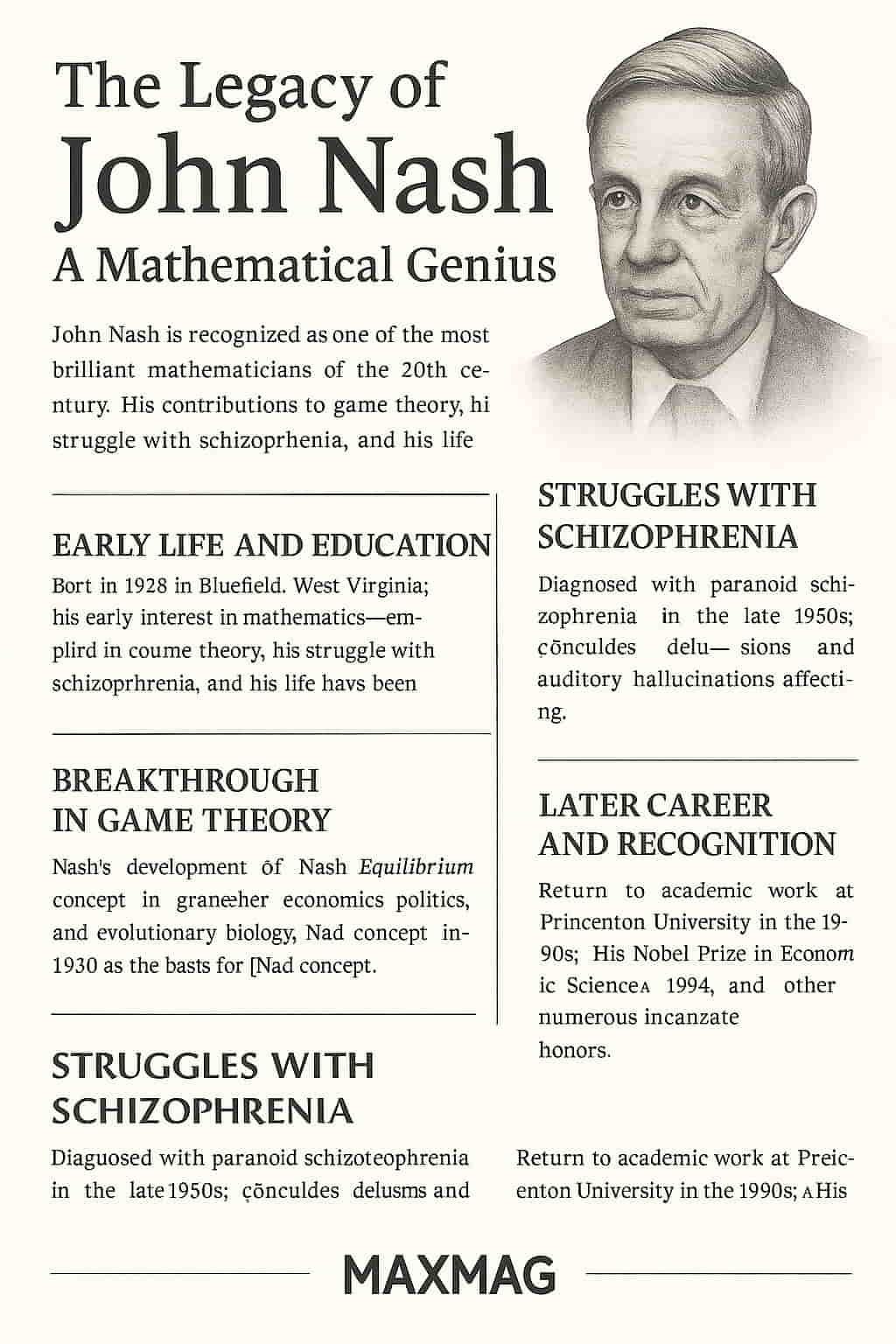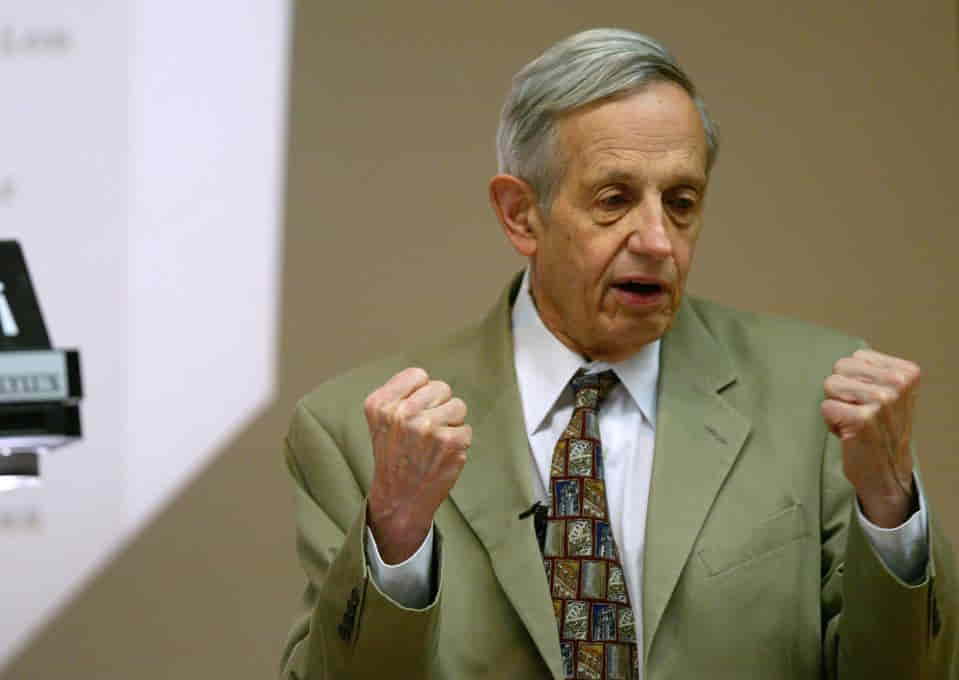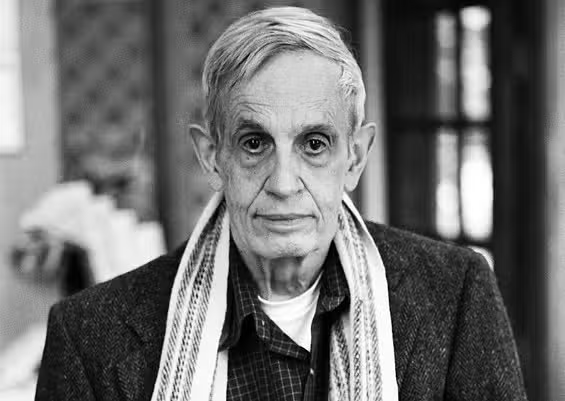
In the quiet corridors of Princeton University, a thin, disheveled man once wandered, scribbling equations on blackboards, barely speaking, and often lost in his own world. That man was John Forbes Nash Jr., one of the most brilliant mathematical minds of the 20th century. His life was not just a triumph of intellect, but a rare and poignant case of schizophrenia resilience—a story that transcends science and enters the realm of human courage.
Diagnosed with paranoid schizophrenia at the peak of his academic powers, Nash spent decades battling delusions and internal chaos. But what makes his journey unique is not merely the suffering—it is the astonishing clarity and functionality he eventually regained. The phrase John Nash schizophrenia resilience encapsulates this rare transformation: from fractured thought to quiet triumph.
Mathematical Genius Before the Storm
John Nash’s brilliance became evident early in life. Born in 1928 in Bluefield, West Virginia, he showed an unusual aptitude for problem-solving, reading encyclopedias and experimenting with codes instead of playing with other children. His parents nurtured this intellect with books, scientific tools, and high expectations.
By the age of 21, Nash had earned a PhD from Princeton. His doctoral thesis, just 27 pages long, introduced the Nash Equilibrium, a concept in game theory that transformed modern economics and social sciences. Unlike zero-sum games where one player’s gain is another’s loss, Nash demonstrated how individuals in competitive environments could reach stable, mutually beneficial outcomes by anticipating each other’s strategies.
This idea earned him global recognition decades later—but at the time, Nash was already moving on to deeper theoretical questions. He was on track to become a legend in pure mathematics.
Then, almost without warning, schizophrenia entered his life like a thunderclap.
Early Signs of Collapse
In the late 1950s, Nash’s behavior began to change. He developed elaborate paranoid delusions, believing that men in red ties were part of a communist conspiracy against him. He mailed cryptic messages to world governments and claimed to receive coded messages from extraterrestrials in newspapers.
These episodes led to several involuntary hospitalizations. Diagnosed with paranoid schizophrenia, Nash withdrew from academic life, resigned from MIT, and began a long period of mental instability. He was in his early 30s.
At a time when mental illness was deeply stigmatized, Nash’s descent into psychosis meant not only personal suffering, but also professional exile. Colleagues distanced themselves. Institutions turned their backs. He became known around Princeton as “the phantom of Fine Hall,” a once-great mind now caught in silent madness.
Inside the Mind: Schizophrenia Explained
Schizophrenia is a chronic psychiatric disorder affecting how a person thinks, feels, and behaves. Symptoms include hallucinations, delusions, disorganized speech, and social withdrawal. It often emerges in early adulthood and tends to persist for life.
Nash’s case was particularly baffling. Despite the severity of his symptoms, he remained intellectually active, sometimes capable of complex mathematical thought even amid his delusions. According to a study published in Schizophrenia Bulletin, cases like Nash’s—where high-functioning cognitive performance and symptom remission coexist—are exceedingly rare.
Some psychiatrists suggest that Nash may have had a milder or more “non-deteriorative” form of schizophrenia, while others point to his high cognitive reserve as a protective factor. That is, his brain had so much intellectual scaffolding that it could absorb the chaos without total collapse.
But medical explanations don’t tell the whole story.
A Life of Shadows—and Quiet Persistence
For more than a decade, Nash lived mostly in obscurity. He drifted through Europe, wandered Princeton’s halls, and refused regular psychiatric treatment. He rejected medication, believing it dulled his mind.
Yet unlike many cases of untreated schizophrenia, Nash’s symptoms began to wane in the late 1970s and 1980s. By the 1990s, he was speaking lucidly again, interacting with colleagues, and even returning to academic conferences. This change, often described as “miraculous,” is now a central theme in any discussion of John Nash schizophrenia resilience.
The Role of Alicia Nash: Partner, Caregiver, Hero
Alicia Larde Nash, a brilliant MIT graduate originally from El Salvador, married John in 1957. Their relationship was strained by the arrival of his illness—she divorced him during the worst years—but never abandoned him.
In 1970, after years of failed treatments and hospitalizations, Alicia invited him to live with her again. She cared for him, managed the household, and protected him from the harshness of the outside world. Over time, her patience created the conditions for stability. They remarried in 2001.
Without Alicia, Nash’s recovery might never have happened. Her role is widely acknowledged by scholars and mental health advocates as an example of how caregiving and emotional connection can shape psychiatric outcomes. Source: National Alliance on Mental Illness
John Nash Schizophrenia Resilience: A Rare Psychiatric Phenomenon
A Case That Changed Psychiatry
Medical literature has long documented the chronic and often worsening nature of schizophrenia. But Nash’s case prompted renewed research into spontaneous remission and late-life functional recovery.
In one landmark review in The American Journal of Psychiatry, researchers concluded that a small percentage of people diagnosed with schizophrenia experience significant symptom reduction after age 40. These cases often involve above-average intelligence, stable environments, and supportive relationships—conditions Nash had, thanks to Alicia and Princeton’s tolerance.
Still, it’s crucial to acknowledge that Nash’s ability to intellectually reject his delusions was nearly unique. He described this process as recognizing that some of his beliefs “didn’t make sense” upon further logical reflection. It wasn’t a return to his former self, but rather the building of a new identity—one shaped by both illness and resilience.
Late Recognition and Global Impact
In 1994, Nash received the Nobel Memorial Prize in Economic Sciences. The award honored his early work on game theory, not his mathematical research during his illness. But the timing was symbolic: it recognized the person as much as the theories.
During his Nobel lecture, Nash made only a brief mention of his illness. But for the world, his presence—composed, thoughtful, articulate—was proof of a human miracle.
Later, in 2015, he and Alicia were tragically killed in a taxi accident in New Jersey, just days after Nash received the prestigious Abel Prize in mathematics. They died together, as they had lived: partners through madness and clarity.
Beyond the Math: Cultural Legacy of Nash’s Story
The 2001 film A Beautiful Mind, based on Sylvia Nasar’s biography, brought Nash’s story to a new generation. Though the movie fictionalized elements of his life—such as hallucinated characters instead of delusions—it successfully conveyed the emotional terrain of his struggle.
Public awareness of schizophrenia increased following the film. Many families living with mental illness cited Nash’s story as a source of hope. It inspired a reevaluation of the term “incurable” and redefined the boundaries of recovery.
Today, Nash is remembered not only as a mathematical pioneer but also as a figure of psychological endurance.
Princeton and the Quiet Return
For decades, Princeton faculty and students watched Nash wander campus silently, often dressed in old clothes, lost in thought. Many whispered about his past glory and current condition.
But by the late 1980s, those same halls once again echoed with Nash’s insights. He began auditing classes, attending seminars, and mentoring young mathematicians. Though he never regained his pre-illness productivity, he became a living symbol of patience, forgiveness, and renewal.
The university never officially rehired him—but they gave him space, dignity, and informal access. That quiet generosity became a crucial part of his long road back.
Scientific vs. Human Interpretations of Resilience
The term “resilience” is often used in psychological literature to describe individuals who adapt positively despite adversity. But Nash’s resilience wasn’t just personal—it had social, cognitive, and emotional dimensions.
-
Social: Alicia’s support, Princeton’s acceptance
-
Cognitive: His own recognition of delusional patterns
-
Emotional: His gradual return to empathy and interpersonal connection
Resilience is not about “bouncing back.” It’s about continuing forward in a changed form. Nash’s life demonstrates that healing does not mean restoration to a previous self, but evolution into a new one.
Legacy in Mental Health Policy
Nash’s case has been cited in mental health policy circles as a reminder of the importance of long-term community care. Where institutionalization failed, personal connection succeeded. Where medication was resisted, stability through dignity was achieved.
Some mental health advocates argue that Nash’s story could help reshape psychiatric care to be more human-centered, offering spaces of tolerance rather than control.
Organizations like the Treatment Advocacy Center now use Nash’s story to argue for compassionate outpatient support models that emphasize autonomy and long-term social ties.
FAQ: John Nash and Mental Illness
What made John Nash’s case of schizophrenia unique?
Unlike most, Nash experienced significant symptom remission later in life without consistent medication. His cognitive strength and social support were key.
Did John Nash completely recover from schizophrenia?
Not completely. He learned to intellectually reject his delusions and maintain functionality, but never declared himself “cured.”
How important was Alicia Nash in his recovery?
Crucial. Her care and patience gave Nash the structure and support he needed to stabilize over decades.
Is Nash’s resilience typical among schizophrenia patients?
No. His story is highly atypical, though it inspires ongoing research into long-term recovery possibilities.
What can we learn from John Nash’s life?
That resilience can grow even amid chaos, and that love, logic, and community can rebuild even the most fractured minds.







